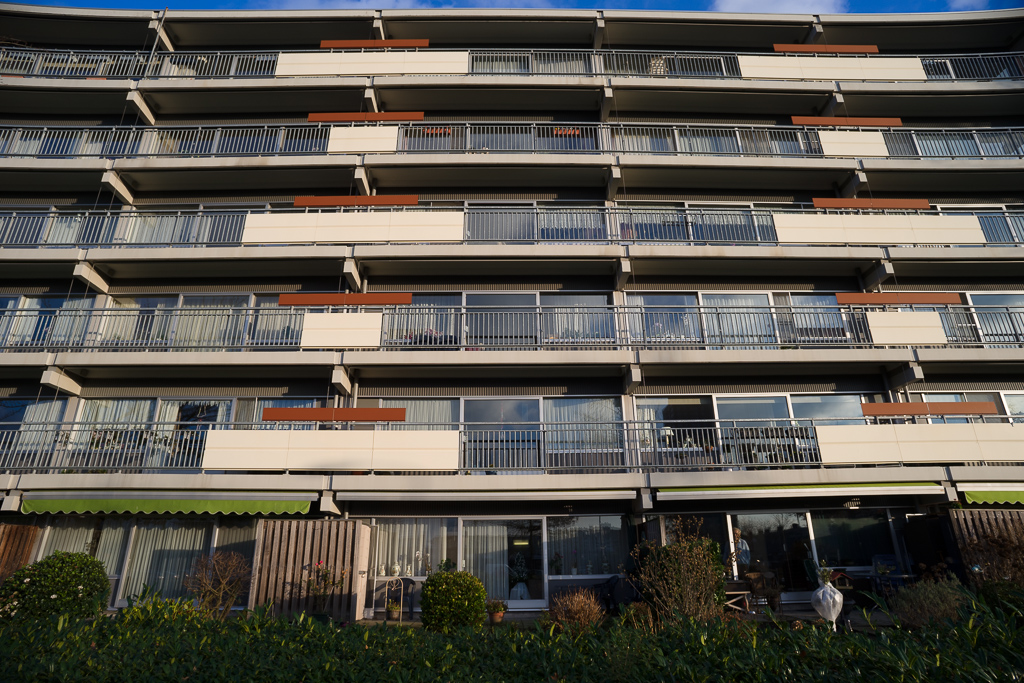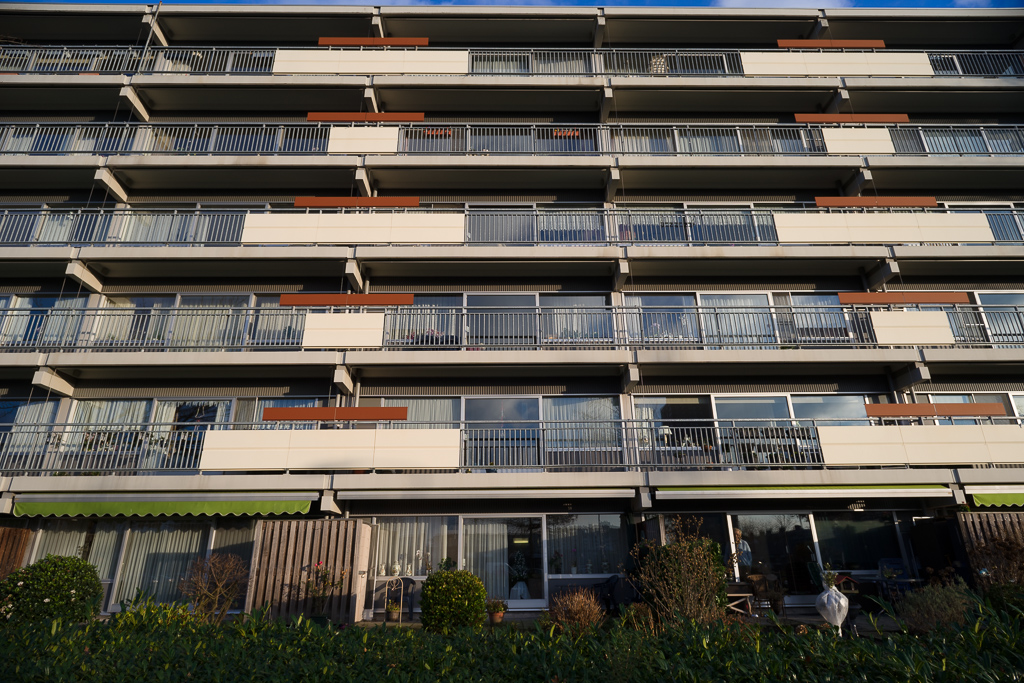For years and years I’ve been a fan of shift lenses. You know, those lenses that allow you to get a building in the picture from bottom to top without falling verticals and without an empty foreground filling up half the frame.
But their geometric distortion started to bother me.
These days I’m used to making lens profiles for Lightroom to eliminate the geometric distortion that is so prevalent in almost all wide-angle lenses.
From these wavy lines…

to a straight top of the building.

These pictures were made with the Minolta MD W.Rokkor 20mm 1:2.8 which shows generous amounts of distortion but most wide-angle lenses show this in a degree that I don’t find acceptable for shots of buildings.
Well, I’ve made profiles for most of my wider than normal lenses, ranging between 17mm and 35mm, and that works a treat. Some 30 years ago I sold such a Minolta 20mm because I got fed up with curvy horizons and that’s a thing of the past now. Great!
But how does that work out with shift lenses? Sadly, not so well. If you use it unshifted, there isn’t a problem, it just behaves like any other lens concerning these profiles. Trouble comes as soon as you apply shift. In that case distortion is not symmetrical around the center of the image so the profile doesn’t work anymore. The only thing you can do is jot down a note about the amount of shift you have applied, extend the canvas in Photoshop so that you have a total image that is symmetrical around the center and apply a custom Lens Correction filter in Photoshop. Cumbersome and not always effective because the simple pincushion or barrel correction doesn’t counter for the more complex wavy line/moustache distortion that is almost omnipresent in wide-angle lenses.
So maybe using a conventional lens in combination with the Lens Corrections’ transforms in Lightroom is more desireable than the classical shift lens for shooting those tall buildings. Distortion can be combatted very effectively, but how about sharpness? In post-processing the upper part of the building like shown above will be stretched considerably and that’s not good for sharpness. On the other hand, when applying shift a lens uses the outer portion of its image circle where its resolution invariably declines, much depending of course on its optical design.
This afternoon I did a quick and dirty check with my Olympus OM Zuiko Shift 35mm 1:2.8 compared to a bunch of other 35mm lenses that had to rely on post-processing to get straight verticals. After that, pixel-peeping to my heart’s content to find out about the image quality near the edges.
I’m going to repeat this test in a somewhat more rigid manner to make it presentable here, but my first impression is that a good convential 35mm lens like the Canon FD 35mm 1:2 with straightening in post is at least as good as the shift lens I own, the Olympus 35mm mentioned before. And I’m not even talking about the Minolta Shift 35mm which doesn’t perform as well as the Olympus.
So are shift lenses superfluous? I dare not say so. I’m sure a Canon 24mm TS-II is in a different league than my shift lenses, although I doubt that distortion is so low that it’ll never bother. But I certainly have to question the use of the two shift lenses I own, now that Camera Raw is able to produce very good results by eliminating distortion and offering powerful perspective correction.
To be continued!
